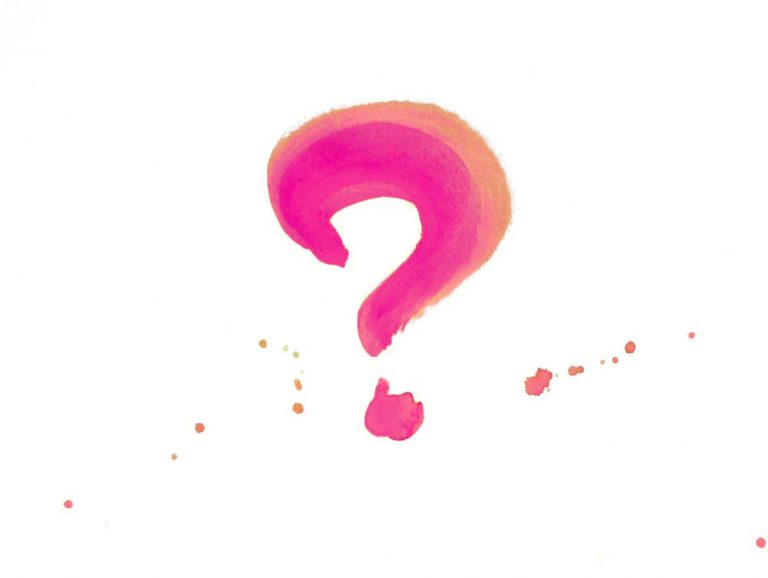The Buddhist landscape has changed significantly during the past two decades: not only have meditation and mindfulness gone mainstream, but there are now a plethora of Buddhist websites and apps that offer meditation instruction; thousands of domestic dharma centers; and flourishing communities of Western monastics, among many other changes.
To celebrate the spread of Buddhist teachings in the West and to examine the societal changes that have come with it, we reached out to a number of Buddhist teachers, folks who have been deeply engaged with Western Buddhism for as long as or longer than we have here at Tricycle. What we wanted to know was this: how have your personal practice and Buddhist community evolved over the past 25 years?
Growth is never linear, and there is no such thing as average when it comes to change. Accordingly, the responses we received were as varied and eclectic as the years that have transpired. We’ve collected a range of voices here.
–Marie Scarles, Editorial Assistant
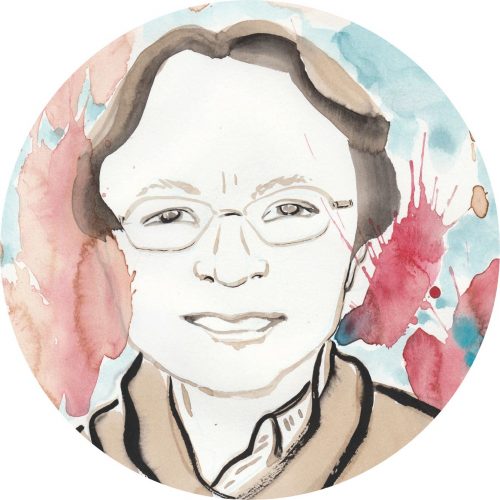
The transmission of the dharma, no matter where it occurs, will always bring great benefit to those who are involved in the process, whether they are teachers or recipients. Practicing the dharma means learning how to find permanent happiness, then sharing that experience with others according to their capacity. Whether the dharma can be propagated purely or not is dependent upon the individual’s karma and mental intention, as well as on the existence of national laws ensuring freedom of religion.
In the two decades in which I have lived in the United States, I have noticed that there is tremendous freedom of religion and an openness to receiving our spiritual tradition. There are many types of practitioners, but most engage with the dharma searching for a satisfactory happiness that they cannot find in the external, material world. They turn to Buddhist philosophy, where they discover internal happiness within their own mind. This tradition is alive with teachers who have realized the goal of the path and who, through their living example, inspire others to do the same. I have observed that Westerners meet the dharma with a sense of confidence and faith in the path to liberation. Because these conditions are coming together, I can say that the buddhadharma is planting deep roots in the hearts of many Americans. Just as Tibetans had the qualities of pure intention, faith, and confidence in this lineage—the conducive circumstances for it to flourish—so do Western students.
Two decades ago, few people were interested or inclined to receive the complete transmissions of dharma. Dharma was introduced only as a general overview through weekend programs and retreats. Now one can meet many practitioners who have studied the classical authentic transmissions of sutra and tantra in the way they were conveyed in Tibet. Among Westerners these days, I find that the capacity to comprehend dharma and take it to heart has become more sophisticated and profound. Because of this, there are more opportunities to connect with the authentic lineage of transmissions.
In many centers throughout America, the traditional ceremonies carried out on the special days of the Buddhist lunar calendar are now conducted solely by Western students. Previously, it was necessary to invite Tibetan teachers to lead the chant, act as the master of ceremonies, make the appropriate offerings, and so forth. Now we find that Western students have learned all of these aspects and are carrying out the lineage traditions themselves. This progress is tangible and will continue as Western students continue to become the teachers.
The dharma’s truth is timeless and available to whoever is interested in making a true connection.
–Lama Chönam
Tashi Choling, Ashland, Oregon
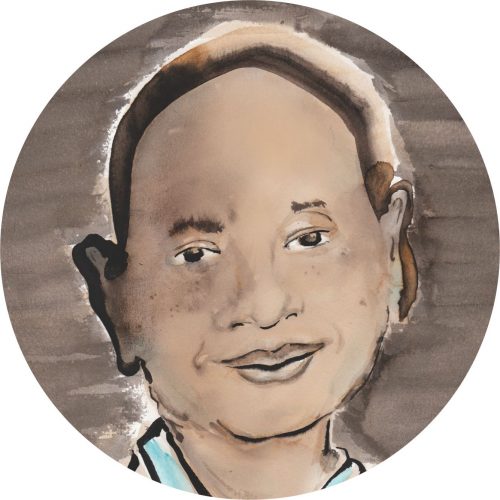 When I look back to the first zendos I visited 30 years ago, I remember them as if recalling visits to foreign places. I felt like a stranger whose differences were visible immediately. I did not know the language or the ways. During the first nights when I practiced zazen with others, my heart beat wildly. I was on alert; my eyes and ears were wide open. I was unsettled by so much difference, concerned at times that I had finally ventured too far from my own culture. And still I stayed.
When I look back to the first zendos I visited 30 years ago, I remember them as if recalling visits to foreign places. I felt like a stranger whose differences were visible immediately. I did not know the language or the ways. During the first nights when I practiced zazen with others, my heart beat wildly. I was on alert; my eyes and ears were wide open. I was unsettled by so much difference, concerned at times that I had finally ventured too far from my own culture. And still I stayed.
My practice has asked me to be curious, brave, and open to everything. I notice that when anger—especially racial anger—is triggered in me, I can also feel the human fear of difference that we all share. Fear of difference is a human challenge. Both those who welcome new practitioners to their zendos and those who wish to enter (having never come before) must move through these fears. When Buddhism came to the United States, it embraced the koan embedded in America’s origins, the nation’s ugly and painful history. It brought us a practice infused with the patience and courage to grapple with it. It took a certain discipline to look at my racial experiences through the lens of practice. Over time, I was able to share this part of my practice in talks I gave before others. It is deeply meaningful to hear people’s stories of the many ways one can be “other.”
Many zendos and meditation halls are more economically and ethnically diverse today. However, I still stand out visibly in most of them. Not everyone wants to enter, but how many do want to but hold back because they fear discomfort or rejection? Questions about diversity and inclusion permeate all aspects of our lives.
–Merle Kodo Boyd
Lincroft Zen Sangha, Lincroft, New Jersey
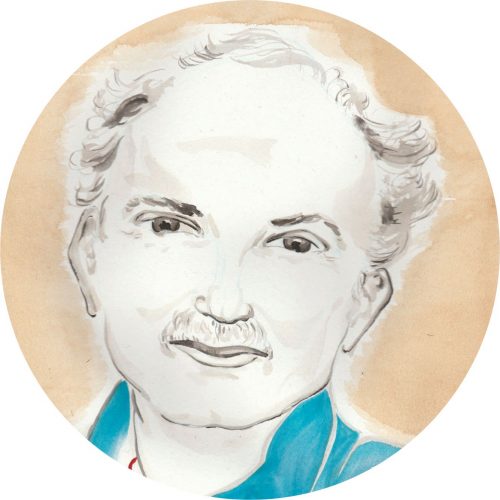 Will the dharma get watered down in the West? Of course. It has always been watered down. And it has also forever offered to humanity the depth of liberation and the free heart.
Will the dharma get watered down in the West? Of course. It has always been watered down. And it has also forever offered to humanity the depth of liberation and the free heart.
When you visit the great Buddhist countries of Asia, you can see the whole range of these possibilities living together. There is amazingly beautiful devotion and compassionate generosity next to thousands of people making offerings to have better business or get a child into a good school. You see monks offering lottery numbers, spells, and fortune-telling to earn their livelihood, and other temples where the purity of virtue, compassion, and deep wisdom practices shine. All these are part of the great mandala of Buddhism, and over centuries the dharma conservators and the dharma adapters, the superficial and the awakened, all support one another.
A society where dharma spreads widely, even if much is superficial, is also the ground for a society that will support the best monasteries and retreat centers and the wisest teachers. And wherever the truths of suffering, the cause of suffering (greed, hatred, delusion), and the path to the end of suffering are given voice, they will find their way into the hearts and minds of many who hear them.
So let there be mindfulness centers next to all the Starbucks and yoga studios. Let there be mindfulness in business and athletics and law and schools. And let mindfulness be followed by a wave of compassion training (it is starting to happen already) that deepens the Western dharma, whether secular or Buddhist; and let neuroscience continue to study meditation and confirm our human birthright of inner development; and let it inspire Christian and Muslim and Jew and atheist, scientist and artist alike.
For 25 years Tricycle has contributed to this movement, giving voice to both our ancient tradition and new forms as Western dharma has moved to the mainstream. It has chronicled the rise of the most authentic trainings and retreat centers and watered seeds of deep liberation. And it has featured skillful means in whole new fields, from addiction recovery to early childhood education to online training. It has witnessed how traditional Buddhist patriarchal cultural forms have grown to be more democratic, feminine, integrated, ecological, diverse, and psychologically sophisticated. And it has showed how the modern bodhisattva attends to the environment, wise society, and human justice as an expression of the inner life of awakening.
Look around. Dharma teaching is not just centered on a few special places and charismatic teachers, but has spread across the continent. There are mom-and-pop dharma centers growing everywhere. Western dharma is being carried by hundreds of thousands, perhaps millions of practitioners. Tricycle has been a beautiful contributor to this web of interdependent awakening.
Let the dharma spread. I trust the dharma to care for itself, and to bless all it touches.
–Jack Kornfield
Spirit Rock Center, Woodacre, California
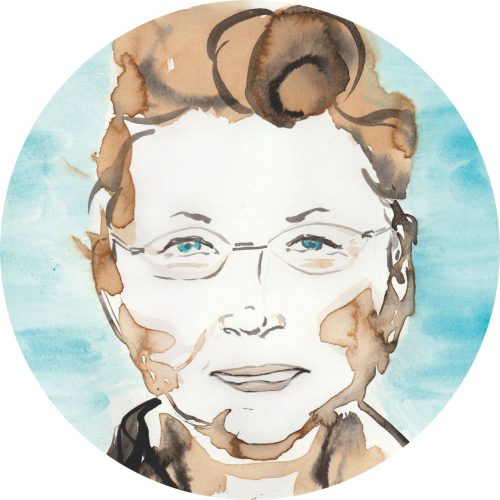 A quarter of a century is brief in the context of Buddhism’s long history, and yet the recent changes seen throughout the Western Buddhist landscape are not inconsequential. I began my practice in the sixties during the civil rights and antiwar movements. For me and for many others at that time, it was not about being a Buddhist but about dealing with the mind in the midst of the complexities of social upheaval. Now, 50 years later, practicing Buddhism is no longer a fringe activity but one that has found its way into medicine, education, government, and the corporate world. Over the past 25 years, Buddhism has morphed into many different forms, some of which resemble those practiced at the time of the Buddha while others, newly invented, have been decontextualized and heavily commodified.
A quarter of a century is brief in the context of Buddhism’s long history, and yet the recent changes seen throughout the Western Buddhist landscape are not inconsequential. I began my practice in the sixties during the civil rights and antiwar movements. For me and for many others at that time, it was not about being a Buddhist but about dealing with the mind in the midst of the complexities of social upheaval. Now, 50 years later, practicing Buddhism is no longer a fringe activity but one that has found its way into medicine, education, government, and the corporate world. Over the past 25 years, Buddhism has morphed into many different forms, some of which resemble those practiced at the time of the Buddha while others, newly invented, have been decontextualized and heavily commodified.
The jury is out regarding the value of “nouveau Buddhism,” but I feel we have to keep a sharp eye on what is happening. It would be unfortunate to have Buddhism become the “opiate of the masses” and lose its ethical grounding as it unfolds in Western society. It would be even more unfortunate to have the rare treasure of the Buddhist worldview subsumed by a fundamentally self-oriented consumer culture. At the same time, despite the controversy around corporate, commodified, and “ethics-free” Buddhism, it is heartening to see engaged Buddhists bringing their dedication, thinking, strategies, and actions to bear on some of the challenges of the 21st century.
–Joan Halifax
Upaya Institute and Zen Center, Santa Fe, New Mexico
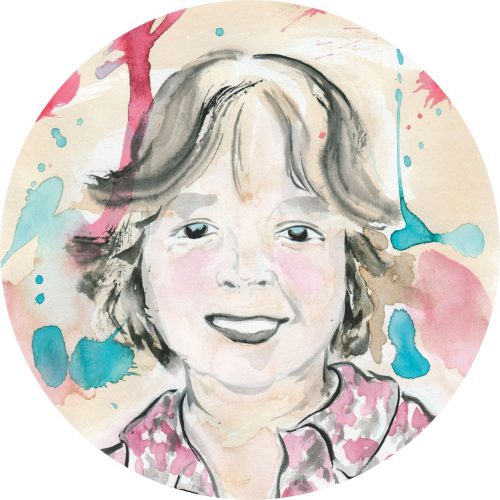 Forty years ago I was part of a small group of Western teachers who began to offer insight meditation retreats in Europe and the United States. I think of this as our “post-monastic” period, in which we focused primarily on teaching meditation in a range of basic and often challenging facilities. We were young and inexperienced and had little idea of how it would unfold. As I look back over the past 40 years, the changes are dramatic.
Forty years ago I was part of a small group of Western teachers who began to offer insight meditation retreats in Europe and the United States. I think of this as our “post-monastic” period, in which we focused primarily on teaching meditation in a range of basic and often challenging facilities. We were young and inexperienced and had little idea of how it would unfold. As I look back over the past 40 years, the changes are dramatic.
We now have a wonderful array of skilled female teachers in a tradition historically led by men. Centers have been established and are thriving, while the tradition of dana (generosity) has become deeply embedded. The offerings have expanded to include families, young people, and the aging. Over the past 10 years dedicated efforts have been undertaken to be increasingly inclusive as we educate ourselves in diversity and endeavor to translate that understanding to make centers welcoming to people of color. We are no longer “post-monastic,” but rather have put down roots in Western culture. The dharma is no longer about what happens on a meditation cushion; it is concerned with how we live our lives and contribute to a more wakeful, compassionate society. None of us know how the next 25 years will unfold, but I believe that we’ve laid a firm foundation that will serve our world well in the future.
–Christina Feldman
Gaia House, West Ogwell, United Kingdom
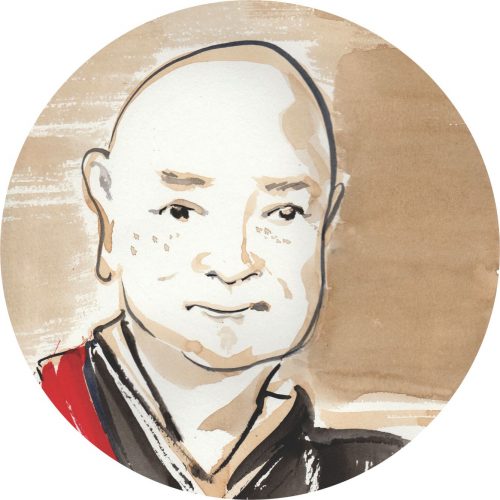 Twenty-five years ago, I lived in a small Soto Zen temple in a farming village near Kyoto, Japan. I practiced mainly with people from outside Japan who lived in Kyoto or with short-term visitors staying at the temple. We practiced zazen daily, held five-day sesshin, and studied Dogen Zenji’s teachings in English. I also worked on translating the writings of Dogen Zenji and those of my teacher Kosho Uchiyama Roshi.
Twenty-five years ago, I lived in a small Soto Zen temple in a farming village near Kyoto, Japan. I practiced mainly with people from outside Japan who lived in Kyoto or with short-term visitors staying at the temple. We practiced zazen daily, held five-day sesshin, and studied Dogen Zenji’s teachings in English. I also worked on translating the writings of Dogen Zenji and those of my teacher Kosho Uchiyama Roshi.
In 1972, when I began to practice with my teacher, he asked me to study English. I wanted to read English books on Soto Zen, but I could find only two available. While staying at Valley Zendo in Massachusetts from 1975 to 1981, because I could not find good texts, I began to work on translation so that I could share Dogen’s teachings with American practitioners.
I moved to the United States in 1993 and now live in a small Soto Zen temple in Bloomington, Indiana. Here I do the same things that I did 25 years ago. I practice zazen with local people and visitors from around the world; I work on translating Dogen Zenji’s writings; I give lectures; and I publish books based on my lectures.
Now, in 2016, almost all of the important writings of Dogen Zenji have been translated into English. People from far away come to this small temple in Indiana to study Dogen. This seems like a miracle when I remember the situation in the 1970s, the ’80s, and even the ’90s.
–Shohaku Okumura
Sanshin Zen Community, Bloomington, Indiana
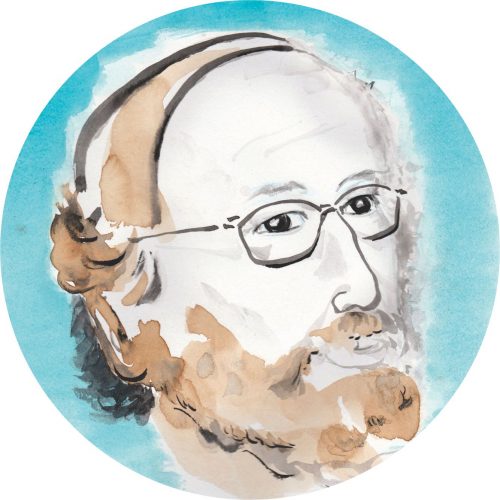 As a vipassana meditation teacher in the tradition of S. N. Goenka, I have seen dramatic changes since I took my first ten-day meditation course in India in 1974. Vipassana centers have proliferated, transformed from a few rustic compounds into a strand of centers that encircle North America like a necklace. There is now a large community of long-term, well-established meditation teachers and students who have practiced for more than 30 years. This community of elders, for me, has replaced the single-teacher model and has made “friendship on the path” an anchoring attribute of how we practice dhamma. We have used our teacher’s example to become examples for one another.
As a vipassana meditation teacher in the tradition of S. N. Goenka, I have seen dramatic changes since I took my first ten-day meditation course in India in 1974. Vipassana centers have proliferated, transformed from a few rustic compounds into a strand of centers that encircle North America like a necklace. There is now a large community of long-term, well-established meditation teachers and students who have practiced for more than 30 years. This community of elders, for me, has replaced the single-teacher model and has made “friendship on the path” an anchoring attribute of how we practice dhamma. We have used our teacher’s example to become examples for one another.
We have also clarified, over time, what meditation can and cannot do. Not everyone develops in the same way, nor is everyone cut out for the rigors and unsettling aspects that are a part of meditation. We are less likely to be intoxicated by mythical stories and promises.
–Dr. Paul R. Fleischman
Amherst, Massachusetts
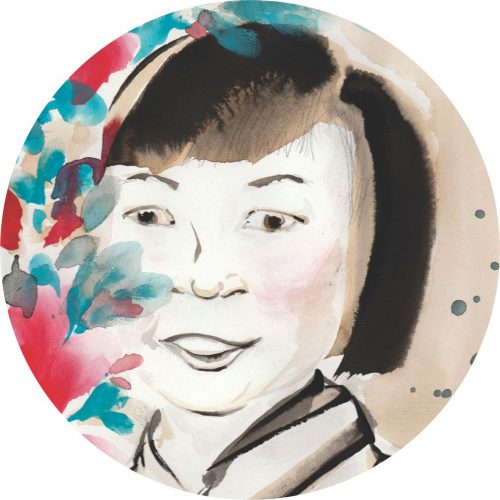 Jodo Shinshu temples in America have evolved rapidly in the past several years—after 117 years in the continental United States—to become decidedly American in outlook. The conversation has turned away from emphasizing Japanese culture as a method of bringing back disengaged members to making the dharma accessible and relatable for everyone. This includes, but is not limited to, people of Japanese descent. An ever-increasing number of seekers from various backgrounds are finding our temples and teachings through websites and social media, and at centers such as the Institute of Buddhist Studies and the Center for Buddhist Education, both housed in the Jodo Shinshu Center in Berkeley, Americans are training as academics, ministers, lay assistants, and Buddhist chaplains.
Jodo Shinshu temples in America have evolved rapidly in the past several years—after 117 years in the continental United States—to become decidedly American in outlook. The conversation has turned away from emphasizing Japanese culture as a method of bringing back disengaged members to making the dharma accessible and relatable for everyone. This includes, but is not limited to, people of Japanese descent. An ever-increasing number of seekers from various backgrounds are finding our temples and teachings through websites and social media, and at centers such as the Institute of Buddhist Studies and the Center for Buddhist Education, both housed in the Jodo Shinshu Center in Berkeley, Americans are training as academics, ministers, lay assistants, and Buddhist chaplains.
By combining these developments with the existing strengths of our Buddhist community (such as its family orientation and Buddhist education for people of all ages), we now have the potential to renew and flourish. Being forced to reevaluate our purpose in the wake of a declining ethnic membership has yielded fresh insights into the treasure that is our teaching.
–Rev. Patricia Kanaya Usuki
San Fernando Valley Hongwanji Buddhist Temple,
Los Angeles, California
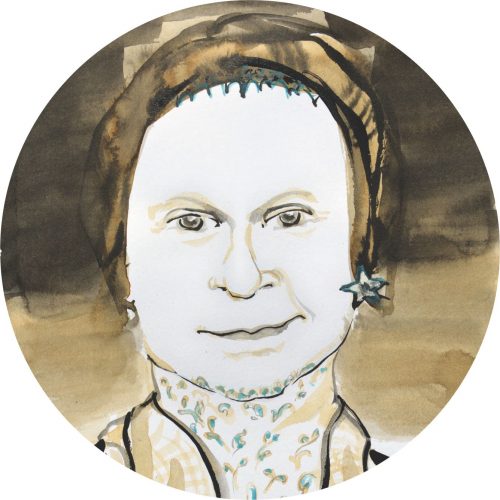 Buddhist practice arrived in my life in the early 1970s. My father, after 50 years of alcoholism, gave up the bottle for Twelve Step recovery. The program demanded that he undergo some form of “spiritual awakening” to replace his dependence on alcohol. In view of his natural hostility to the concept of God, Budd-hism presented the practical solution. Good old Dad dragged me, against my will, to the few centers where one could hear dharma talks in those days. I remember listening to talks by Peter Matthiessen, Eido Roshi, and Chögyam Trungpa Rinpoche.
Buddhist practice arrived in my life in the early 1970s. My father, after 50 years of alcoholism, gave up the bottle for Twelve Step recovery. The program demanded that he undergo some form of “spiritual awakening” to replace his dependence on alcohol. In view of his natural hostility to the concept of God, Budd-hism presented the practical solution. Good old Dad dragged me, against my will, to the few centers where one could hear dharma talks in those days. I remember listening to talks by Peter Matthiessen, Eido Roshi, and Chögyam Trungpa Rinpoche.
I started my own fledging meditation practice in college in the ’80s, and by the ’90s I was visiting Buddhist centers on my own. I loved the dharma but didn’t care much for the folks I met there. In the ’80s I was a hardcore punk, with a spray-painted leather jacket and a green Mohawk; by the ’90s I looked more hoboish than Tom Waits. I was broke and stood out like a sore thumb among the well-heeled crowds at dharma centers where everyone seemed to be 55 years old and dressed in cashmere tunic sweaters and stretch-waist pants. They looked like Upper West Side therapists, certainly not what I’d call “my tribe.” I couldn’t have felt any less at home.
I stumbled upon my lost tribe only when I addressed my own alcoholism and drug addiction in the mid-1990s at Alcoholics Anonymous meetings on Manhattan’s Lower East Side. Here was the vibrant subculture of impoverished artists, tattooed vegans, anarchist activists, people of many colors, and proud members of LGBTQ communities. Not long after 9/11, I met an enthusiastic Buddhist teacher named Noah Levine who had relocated from San Francisco to New York City, anxious to start a Dharma Punx chapter on our shores. Home, at last! Over the years I assisted him, took teacher training, and became an empowered teacher.
Today I’m 55 years old and wear stretch-waist pants more often than I care to admit, but when I teach, I see the faces of people ranging from their twenties to their seventies who represent every income bracket, gender, sexual orientation, artistic practice, and subculture. That being said, our centers are still not inclusive enough. Our gatherings generally attract 50 or 60 people, but I can count the people of color on my fingers; we’re well below the percentage of the overall population. Also, too many men—myself included—remain at the front of the rooms presenting the dharma. I’m confident that 25 years from now another teacher will write about different concerns in Tricycle’s 50th anniversary issue. And, in these 25 years that have passed in the blink of an eye, we’ve come a long way, baby.
–Josh Korda
Dharma Punx NYC, New York, New York
Web-only Exclusive
Over the past 25 years, the biggest evolution in my practice has been the move from extensive formal retreats to the incorporation of retreat in daily life. I noticed that by putting so much emphasis on formal practice, I was limiting my meditative mind and deferring my spiritual development. By better understanding the principles of retreat and practice, I’ve been able to gradually expand the meditative mind into everything I do.
Formal practice is critically important. The infant meditative mind needs a proper holding environment, an incubator where it can be nourished. But you can’t live your life in an incubator. The formal practices and retreats that are so necessary to develop a meditation practice can actually come to delay it. If we’re not careful, the container gets too tight. The point of practice is its “performance”—extending meditation into daily life.
Twenty years ago I discovered that my meditation practice was becoming too tight, too precious, even sterile. I noticed myself slipping into an escapist attitude as I used my formal meditation practice to avoid the grittier elements of life. Then I heard my teacher Khenpo Tsültrim Gyamtso Rinpoche utter a radical piece of advice: “Nurture your meditation by destroying it.”
In order to destroy or release the limitations that I had unconsciously imposed on my meditative mind, I started replacing long sessions and retreats with frequent shorter ones. I started practicing the “one-breath session” and began to meditate while lying down or standing as a way to break my reliance on the posture of sitting. I also started practicing outside and engaged the quirky “reverse meditations” that are designed to expand the practice: I began to meditate with pain, in loud and distracting environments, while moving rapidly, or while intentionally creating as many thoughts as possible.
Meditation is characterized by stillness (of body), silence (of speech), and spaciousness (of mind), which are nurtured in the incubator of practice. By shattering the incubator with these reverse meditations, I found myself better able to locate stillness in movement, silence in noise, and spaciousness in claustrophobia. My practice could now extend into situations where previously I would lose it. Finally, through practicing dream and sleep yoga, I’m able to stretch meditation into the night. In doing so, I slowly find myself in lifetime retreat.
–Andrew Holecek
Nalandabodhi Boulder, Lafayette, CO
Twenty-five years ago I was living in India—happy as a clam in a world of colorful saris, sweet chai, dust, and heat—and drenched by the teachings on emptiness. It was a time of strong devotion; my attention rarely strayed beyond a nearby field where a farmer milked his buffalo. It was a magical period of my life before the time of cell phones and the Internet. I lived in India for several years and then in monasteries in Thailand before finding my way back home to my culture and family in California. There, I waded through early English translations of the Pali canon for the first time.
The recent accessibility of excellent English translations of canonical texts, in combination with the development of retreat centers that support sustained practice, have contributed to the depth of practice now occurring in the West. I have spent more than nine years in silent retreat, most of which has been at Western retreat centers after returning from Asia. I sometimes lament that meditators are rarely grabbing their backpacks and following the calling for pilgrimage as I did when I flew to Asia on a one-way ticket to fully immerse myself in the dhamma. In today’s fast-paced world I meet people who proudly boast of a daily meditation practice of five minutes supported by an app.
Nevertheless, the teachings of liberation still ring loud in our world through diverse voices and forms. I trust the teaching of non-clinging, and I have confidence that the ending of greed, hatred, and delusion is the essence of awakening and the purpose for developing mindfulness. It is an aim that is worth dedicated effort; it is the cure for the suffering of human sorrows; it is the way of peace.
–Shaila Catherine
Insight Meditation South Bay, San Jose, CA
My first gleanings of Buddhism came from books, but in 1968 or thereabouts, I met Chögyam Trungpa Rinpoche and Ato Rinpoche in Cambridge, England. This was a big eye-opener. Ato imparted love, assurance, and rigor. Trungpa opened doors in the mind. He was willing to kick over conventions that stood in the way, and his personal crusade against spiritual materialism was very exciting. Shortly afterward, I met Kennett Roshi, freshly arrived back from Japan. I was by this time an ardent meditator. Roshi’s depth of perception was remarkable, and I became an enthusiastic disciple.
When Trungpa Rinpoche and Kennett Roshi went to America I was left behind. Their premature deaths were induced by their particular dharma experiences. Rinpoche’s experiments with the wilder side of Western life contributed to his death, and Roshi’s health was broken by her experience in a Japanese monastery. As I sit here in my own advanced age, recovering from pulmonary embolisms that the doctor tells me are due, in part, to having spent hours in the lotus position, I sympathize with them. Maybe Buddhism should carry a health warning!
After Roshi died, I studied with Theravada friends and spent time with Thich Nhat Hanh. In 1995 we started a project that has since become the Amida Order, and during that time I was inspired by a number of Pure Land teachers, including Saiko Sensei in Japan and Ven. Minh Chao in Vietnam. I don’t meditate quite so much anymore—not in the lotus position anyway—but my life is in a dhyana [meditative] state. I have come to realize the power of faith and have become immersed in grace—the merit transference of all the Buddhas. Aspiration has, to some extent, been displaced by gratitude.
–Dharmavidya David Brazier
Order of Amida Buddha, Bessais le Fromental, France
I started my practice 20 years ago in Mexico City. In Mexico at that time there was little information about Buddhism or meditation practice; the only books that were available in Spanish were from the sixties and seventies. After reading Three Pillars of Zen in Spanish, I began to sit meditation in my own home. After a few months, I saw on a flyer that the Korean Zen master Samu Sunim was giving talks at a retreat. I attended, and he later became my first teacher. I joined a sitting group that met every Saturday for two hours, where we followed the Korean Zen tradition of prostrations and chanting. We didn’t have a teacher, so there were no dharma talks. We might read a chapter of the Dhammapada or study the paramitas [perfections of virtue] but nobody discussed their practice; it was just about sitting together.
Years later, when I went to live as a resident in a Zen temple in Toronto, I found that my Korean teacher and training were strict and traditional. The hierarchical and patriarchal structure was similar to that of my Mexican background and culture. It was then that I first read an issue of Tricycle; it blew my mind when I realized how many Buddhist centers, traditions, and teachers existed in North America!
Later, I trained at Upaya Zen Center with Roshi Joan Halifax. My formal training was in the lineage of White Plum Soto Zen, but I witnessed the innovative ways that dharma was being explored there. UZC wasn’t tied to one tradition, and this widened my perspective on the dharma profoundly. I met teachers from diverse Buddhist and spiritual traditions, including Native American, Sufi, Jewish and Christian.
I currently live and teach at Dharma Bum Temple in San Diego. I am working to fulfill my dream of bringing the buddhadharma more fully to my brothers and sisters in Mexico. Here in San Diego, I need to carefully consider which aspects of Zen practice are fundamental and which are cultural obstacles for Hispanics as I build bridges for a multicultural, bilingual sangha.
Thanks to the Internet, the information gap between the United States and Mexico is no longer the chasm it was 20 years ago. Curiosity is rising, and there is an increasing amount of Buddhist teachings available in Spanish. Teachers in Mexico are preparing new fields for the seeds of dharma to grow, transforming the lives of our sangha members in the south.
–Jose Shinzan Palma
Dharma Bum Temple, San Diego, CA
I began studying Zen Buddhist meditation in 1971 when I was 24 years old. As a young political activist I worried that I was abdicating responsibility for the world to become a temple mouse. Now, 45 years later, I no longer have this worry. Trained in two dynamic Zen lineages, I practice as a lay ordained dharma teacher within the field of engaged Buddhism.
When I reflect on the last quarter-century of applied Zen practice, I turn toward my experience writing the “On Gardening” column for Tricycle, which I’ve written, four seasons a year, for the last 21 years. In the early columns, I stayed rooted to my practice at Green Gulch Farm Zen Center. I wanted to go deep, to focus on a single torpid bumblebee stirring or write about a great horned owl slaughtering her prey on the zendo roof while we sat zazen far below.
Over the next two decades, the expression of my practice widened as the field of engaged Buddhism widened also. Studying Zen with Thich Nhat Hanh and close friends in the early “Community of Mindful Living,” we set up retreats for Vietnam veterans, peace workers, and environmental activists. Together, we established a vibrant Buddhist family program. I began to teach writing and Zen with my dharma sister Natalie Goldberg, and I trained with Joanna Macy and the Buddhist Peace Fellowship. I also worked to establish organic gardening programs throughout the Bay Area.
Much of this engaged practice work is chronicled in my Tricycle columns. I keep them in an old blue box with an admonition from Thich Nhat Hanh inscribed on the inner lid: “We are here to awaken from the illusion of our separateness.” I am grateful for my decades of Zen training, for the proliferation of engaged Buddhism, and for true dharma friends in these challenging times. These allow us to extend our practice, deep and wide, into the living ground of this suffering world.
–Wendy Johnson
Green Gulch Farm Zen Center, Muir Beach, CA
My life as a Pure Land Jodo Shinshu priest in America spans three decades.
From 1985 to 1993, I served temples on the west coast as an overseas priest sent from Japan. These were Japanese-American temples with very few non-Japanese members. This was my introduction to understanding American Buddhism.
At that time, there were few books on Buddhism available in English. Young Japanese Americans in the eighties were often embarrassed to be Buddhist and tried to hide their religion from their peers. Later in the decade, however, this began to shift as His Holiness the Dalai Lama drew more attention to Buddhism in the West. (Hollywood films Little Buddha and Seven Years in Tibet also helped.) By the early nineties, Buddhist books and Tricycle magazine could be found in regular bookstores.
From 1994–2010, I served as the resident priest of the New York Buddhist Church. There, I experimented with ways of presenting the dharma and developed relationships within the New York Buddhist community. I also became involved with the greater New York religious communities in response to 9/11. This gave me ample opportunity to think about who I am as a Buddhist and where I stand—or “sit.”
I left the temple in 2010 to complete a Doctor of Ministry program at New York Theological Seminary and became a “freelance” Buddhist priest. In this capacity I try to do things I could not do while running a temple. I teach smaller and more intensive dharma study classes, re-read sutras I’ve read before, read the ones I haven’t, and I stay active in Buddhist and religious communities. I value the balance of mind and action.
As more and more Buddhist practices such as meditation and mindfulness become popular in American society, I find it important that I focus on the basics, deepening and broadening my understanding of Buddhism. I hope that now is the time for American society to move in accordance with the values of compassion, peace, and interconnectedness of all lives.
–Rev. Dr. T Kenjitsu Nakagaki
Buddhist Council of New York, New York, NY
Thank you for subscribing to Tricycle! As a nonprofit, we depend on readers like you to keep Buddhist teachings and practices widely available.
